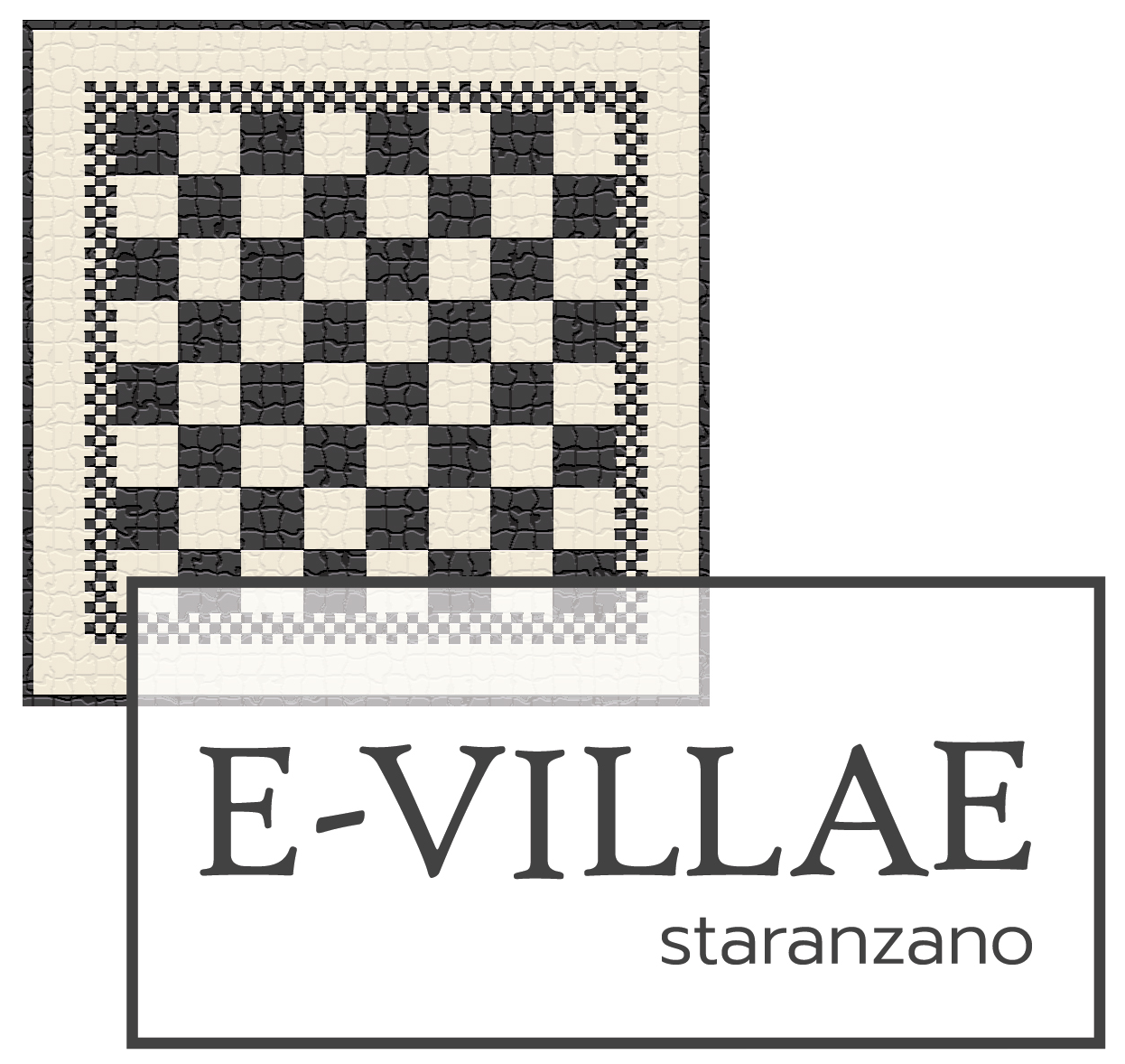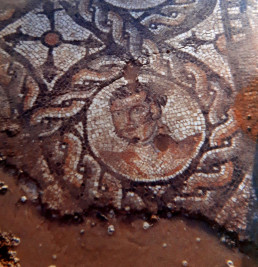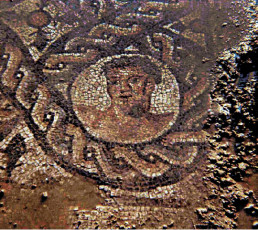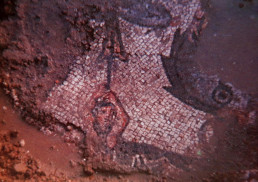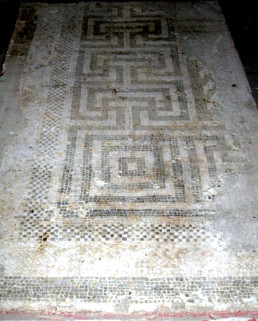The villa of Casale Rondon
In the territory of San Canzian d'Isonzo, about two kilometers south of today's settlement, where the medieval mill of Rondon stood, fragments of a richly decorated polychrome mosaic floor, referable to the first half of the 3rd century A.D.The mosaic is documented only by photographs taken at the time of its discovery and was covered soon after by buildings of agricultural use.
It featured depictions of busts of athletes alternating with captions in Greek, enclosed in circular fields bordered by two-headed braids.
One section of the floor was decorated with a marine scene, very lacunar, of which only part of a cupid and a sea monster were preserved.
Although there is a lack of data on the structures and their extent, scholars believe that these mosaics were part of a large residential complex of the highest level equipped with baths, since the association of figures of athletes and marine scenes finds comparison with typical decorations in Roman-era bathhouse environments.
The Gorgat mansion
In the area of the Gorgat, south of San Canzian d'Isonzo, work carried out in 1928 by the Brancolo Canal Reclamation Consortium brought to light, on the left bank, wall structures and a valuable mosaic floor with black and white tesserae and a meander frame; these remains probably refer to the residential part of a rustic villa.
Research conducted in the area in 1993 and 2006 allowed the collection of additional data, particularly on the dating of the complex, which can be attributed to a period ranging from the 1st to the 3rd century AD.
The extent of the villa is not known, but the discovery on the surface, after plowing, of a large amount of archaeological material-mostly building material-even on the other bank of the Brancolo canal suggests that the villa was large in size and extended further southward.
